Having been approved for a pair of super skinny buildings to rise up to five stories across the Hayes Valley site, the two former Central Freeway Parcels M and N (a.k.a. 300 and 350 Octavia Street) are now on the market rather than preparing to break ground.
As designed by Envelope A+D, the two approved buildings would measure 11,761 square feet apiece, each with 943 square feet of ground-floor retail space, eight studios, four two-bedrooms, 960 square feet of rooftop open space and perforated bronze mechanical louvers, “allowing the residents to raise or lower the exterior shades on the building combines a functional architectural feature while contributing to a dynamic façade that is constantly in flux.”
The asking price for the fully-entitled site is $3 million, or the “best offer” to emerge.
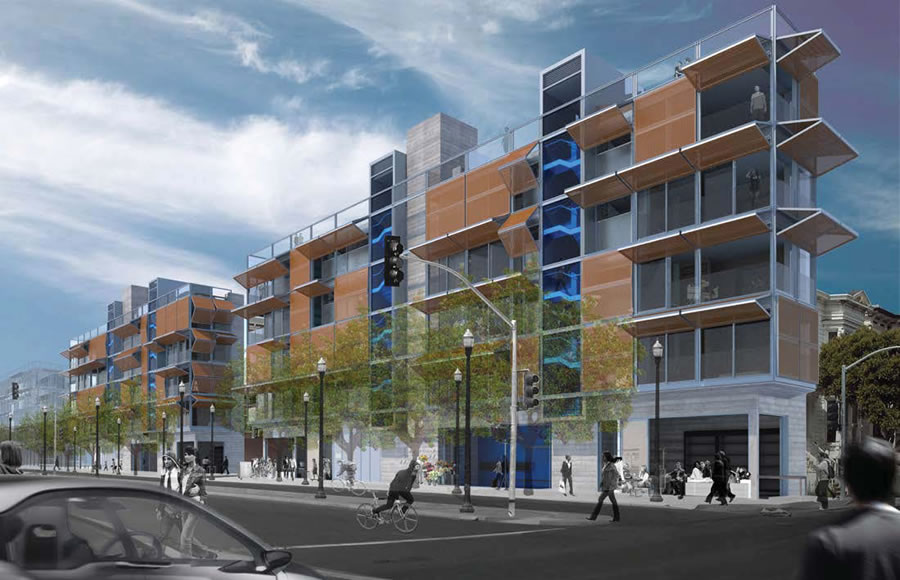
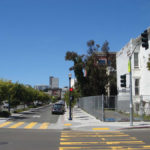
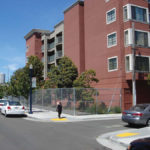
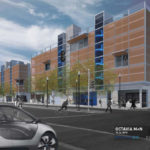
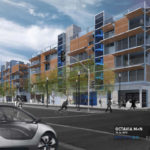
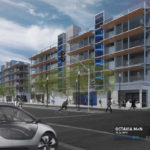
Is this $3M for both lots and 24 entitled units or $3M each at 12-units a pop? Who’s the listing broker?
The price is for both lots. Colliers has the listing.
In boom times in SF every sliver of land, sadly, is built upon knowing someone will rent or buy a condo there. Even if such units are tiny and perhaps oddly configured. If SF is in a period of plateauing, these units – not desirable to begin with IMO – may become less so. In terms of what people are willing to pay to live here.
It will be interesting to see how long this site stays on the market and what someone eventually pays for it.
From the SocketSite thread in the link above:
How much did the developer pay for the lots? $495,000? And now they want $3M?
Wouldn’t be considered skinny for a Brooklyn brownstone…
I kinda agree here. I don’t think people fully appreciate what SF is going through in terms of how future units will look like and how valuable this land truly is.
When I migrated here in 2000 as dotcom 1 was crashing it was more of a local to national event… less global.
SF and the Bay Area is global now. It always was in terms of culture and tourism. But it’s bigger now. Much bigger.
Sure this particular site might be considered a bit bubbly and could go down a bit or more near to mid term (1-5yrs) but longer term SF proper and the spillover core Bay Area and rich suburbs in that immediate range will continue to be serious capital and human based resources talents which will drive demand and pricing.
Just like it has been. With a boom bust cycle continuation to keep us all on our toes as well.
This parcel is roughly as deep as a street parking space is long. The top photo shows it well. One is nearly free and one is top dollar. Housing for people: top dollar. Housing for cars: nearly free. The subsidy is so immense we’re blinded by it.
Your “housing for cars” comment is really what’s called a STREET.
We all pay for the upkeep and maintenance of it. It’s not free. or nearly free.
I’m beginning to think that people like “Busrider” and “Stopdriving” are just trolls, or worse bots, employed by either mass transit snobs, bike advocates, or the marketing divisions of car and ride share companies. Their childlike fascination with killing off individually owned autos is unrealistic in a time of limited public funds for increased transit investment and a gradual move away from fossil fuels. If anyone wants to pay for, and reap the very real benefits of owning an automobile, especially one that is electric or hybrid, they should have the choice to do so, and they will. People like and need cars guys, get over it! Or better yet spend a day schlepping a kid or two around town or being employed in a profession that requires you to be mobile.
It’s not childlike. It’s a simple observation that roads are almost totally socialized and sort of like public goods. Parking is the same or greatly underpriced. That equals overuse. We do not have unlimited space or resources
That’s because, going back to Adam Smith, we’ve known that roads have huge positive externalities. Going back to Roman times this was known.
A lower cost of transportation affects everyone, not just the individuals using the road. Stores get cheaper delivery of goods and customers from farther areas. Businesses get workers with shorter commute times so they can access a larger labor pool. Demand for housing increases in some areas and decreases in other areas as people have the option of living farther from work. It becomes cheaper to meet with someone and communicate or buy/sell.
Making the world more connected makes it more efficient, and even if you never leave your home you are benefiting enormously from low transportation costs. It affects everyone, not just the users of the road.
You can also argue that roads impose costs on the whole community, which they do. People complain about undesirables entering their neighborhood, which is why Atherton doesn’t have street lights and has only difficult to navigate roads. They don’t have a lot free parking there because I don’t think they have any curbs. If you park your car on the side of the road, a SWAT team will descend. Businesses complain about more competition from far away vendors. In popular areas, old timers complain about “too many people” coming in from all over. Roads have always been both a threat and a benefit, but as you lower the cost of transportation you improve overall efficiency even at the cost of eroding some local monopolies and upsetting the traditional beauty of your village. On net, they are an enormous gain for the whole community.
I just work here
I don’t disagree with anything you have stated
But without user fees roads and underpriced parking will be overused.
George, for what it’s worth, I have two kids and I schlepp them around town on a Muni bus since we don’t have a car. You’re welcome to think of me or anyone else you disagree with as a troll. For what it’s worth, I’m just another resident of our city – employed in the health care field. Certainly in our affluent and free society, people can and should have the choice to own automobiles. Yet, in a just and environmentally responsible society, they should also shoulder the cost of such automobile ownership (and this is certainly not the case with the street parking in question here – regardless of the energy source of the automobiles used).
It seems as if we may agree. The parking is nearly free to the user (whoever occupies the parking space with their automobile), yet we all pay for it. From my humble perspective (and also from an environmental perspective), the value of this very pricey and precious real estate is squandered.
Taking away underpriced street parking in SF would be like taking away guns in Texas. People would lose their minds
I think you’ve misinterpreted busrider’s comment. As I understand his/her point, he/she is making an ironic observation. The public, through taxes, subsidizes the places where one uses and parks one’s car, i.e. “housing for cars.” Thus, anyone with a car can find a place to use or park it with no little to no additional out-of-pocket expenditure. Yet when it comes to actual housing, “housing for people,” with ever-more-rare exceptions, people are on their own to foot 100% of the bill. It’s actually a pretty interesting observation about our priorities.
My lot is 17 feet wide, Inside my old, skinny house, it feels wider…but if I had it, I would welcome the extra 1.25 feet . Perfect for a deep bookshelf. Or something. .
It is really quite a shame that Octavia Boulevard has those side streets. It is such a waste of precious land that could have been used for the extension of that skinny building.
I agree I think they are ugly and pointless.
Lets hope these sites aren’t turned over to SF MicroPADs
UPDATE: Super Skinny Hayes Valley Development Fully Permitted! But…